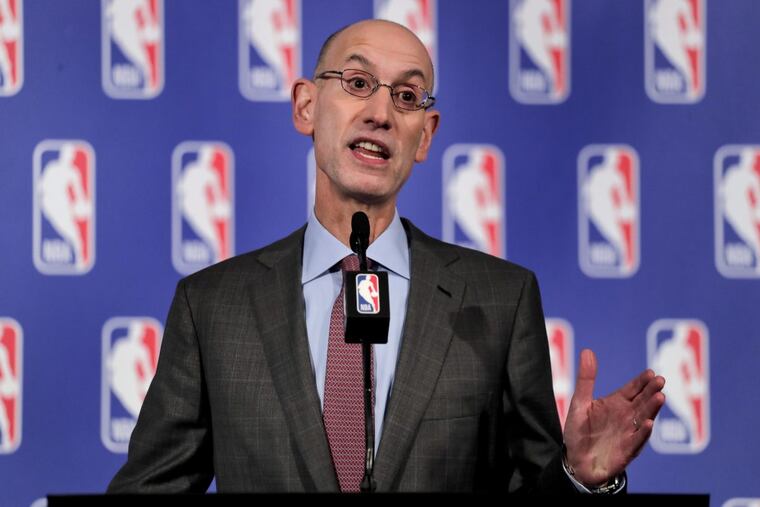The future of NBA statistics and analytics
Is is possible to track things such as chemistry, mood, heart and effort? With technology rapidly advancing, the answer could be yes.

Second of two parts
In a few short years, the NBA has gone from a world of basic metrics to a world being run by deep analytics.
"Analytics are part and parcel of virtually everything we do now," NBA commissioner Adam Silver said at an analytics conference at the Wharton School of Business in March.
Things that weren't trackable before are now deciding factors in the types of players teams seek in the draft or in trades, defensive approaches, player development, infusing practices and even contract negotiations.
"If something happens on the court, we have data for almost all of that," 76ers vice president of analytics and strategy Alex Rucker said. "There are very few questions about what happens on the court that we can't answer or provide some insight into, given a little bit of time to handle it on the technical side."
For those still resisting the analytics movement, there is always one standard argument: Analytics are great, but they don't take into account things such as chemistry, heart, effort, stress, confidence, etc.
That's true. For now.
"Those are all things that I think in 20 years we'll be having some very interesting conversations about some of the neat research analysis," Rucker said.
And it's already in the works.
Players are already using apps and wearable devices that monitor things such as sleep, stress levels, relaxation, and mood. Rucker, who was poached from the Toronto Raptors by Sixers general manager Bryan Colangelo in October 2016, said similar apps were being used when he worked with the Canadian national basketball team.
Outside of sports, in the corporate business world, Rucker said companies are using the same RFID (radio frequency identification) chips the Sixers use in their practice facility to track the movements of employees. They just use them in a different way. And there's a lot of information that can be gleaned from the tracking data.
Who talks to whom and who spends the most time together? Who are the employees who bring people together? After a particular conversation or amount of time spent with a particular person, was there a spike in production? Who spends the most time working after hours?
Analysis of that type of data could result in understanding things such as work ethic and chemistry and who motivates players.
"The biggest issue is we can't use them in games," Rucker said. "Chipping players in any pro sport is not OK. Yet."
Silver has said publicly that biometrics, pulled from the wearable devices, will be a part of the conversation moving forward. Silver has also noted that information from such devices offer an interesting view as we try to more deeply understand stress, confidence, and recovery management.
"Technology is evolving and is very dynamic, in sometimes a scary way," Rucker said. "I read a couple months ago about how they're using facial-recognition software in airports. They are using it for reasons that are security-related, but the underlying methodology has us asking: Can we use player-tracking cameras in an objective way just based on how you look and how you move?"
As far as analytics are concerned, Rucker said he always tells people, "If you can describe to me what you're interested in measuring, we can capture it." But Rucker agrees that somewhere, on a fundamental level, there are things that just can't be measured.
"I don't know what people are feeling or thinking," he said. But he is hesitant to say that technology won't grow to the point of figuring that out.
Because of the exponential rate at which technology is developing, sports analytics crews, such as the 10-person team Rucker leads for the Sixers, have a job within their job. They have to wade through available and developing tools to decide what is useful, what makes sense and what might lead to a deeper understanding of things that affect pro basketball.
Though Rucker says it's likely that everything will be trackable at some point, he also believes there are certain times when analytics should not be used.
"I don't think you need analytics as a rookie," Rucker said.
The reason is simple. Rookies have too much to deal with and learn. Moving from a short, less intense season to an 82-game season is jarring enough. Then there are the playbook, defensive schemes, teammates' personalities and strengths and weaknesses, and money.
Rucker said it's better to let a rookie learn the world of the NBA organically before filling his head with a million different insights on how to better defend the three-pointer.
Ultimately, there's no way to predict what the NBA will look like or how people will use data and analytics to make their decisions. What we do know is that there is more information available now than ever before, and it will likely continue to grow and change.